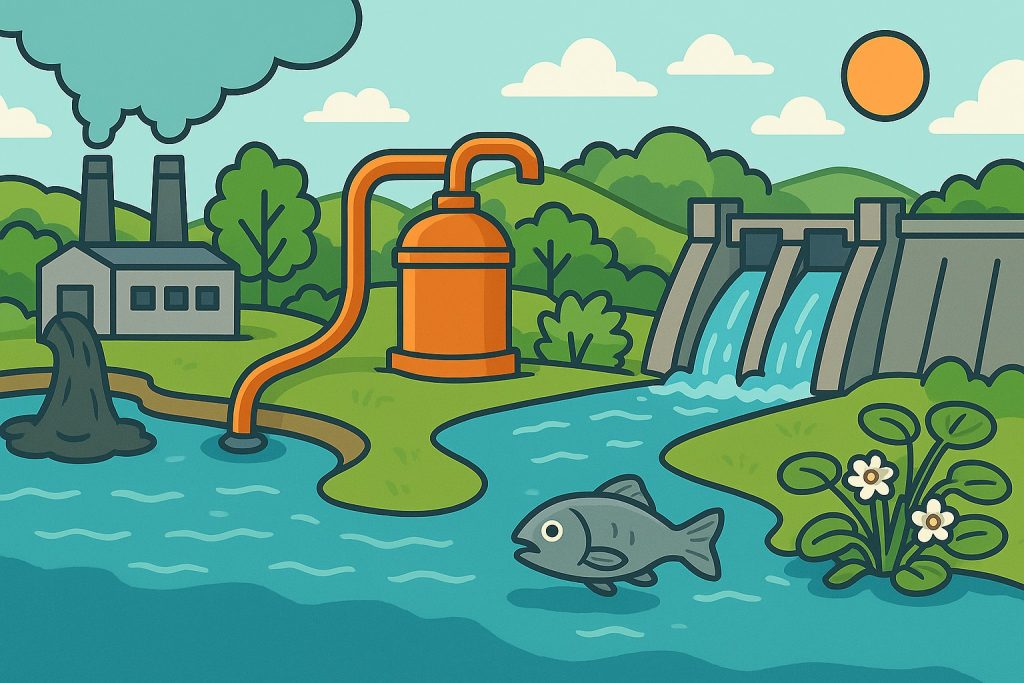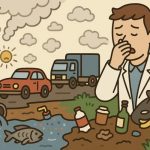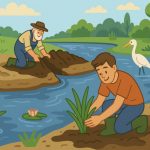Rivers, lakes, and wetlands are the lifeblood of the planet. They supply drinking water, support agriculture, power industries, and harbor countless species. Yet today, many of the world’s aquatic ecosystems are under threat. Pollution, overuse, and climate change are pushing these fragile environments to the brink. In this article, we explore what harms water ecosystems — and why their protection is vital for nature and humanity alike.
What Are Aquatic Ecosystems?
Aquatic ecosystems include all environments dominated by water, such as:
- Rivers and streams
- Lakes and ponds
- Wetlands and marshes
- Estuaries (where freshwater meets saltwater)
These systems are home to fish, amphibians, birds, insects, plants, and microscopic organisms. They are also deeply interconnected with the land, atmosphere, and human society.
Major Threats to Aquatic Ecosystems
1. Water Pollution
Water bodies are contaminated by:
- Industrial waste (chemicals, heavy metals, toxins)
- Agricultural runoff (fertilizers and pesticides)
- Sewage and urban wastewater
- Oil spills and microplastics
These pollutants reduce oxygen levels, poison aquatic life, and create dead zones where few organisms can survive.
2. Overuse and Water Extraction
Excessive water withdrawal for:
- Agriculture (especially in arid regions)
- Industry and energy (cooling, processing)
- Urban supply
…can lower river levels, shrink lakes, and dry up wetlands, disturbing entire food chains.
3. Dam Construction and River Regulation
While dams provide electricity and irrigation, they also:
- Block fish migration routes
- Disrupt natural water flow and sediment transport
- Alter the temperature and chemistry of water
- Submerge natural habitats and flood forests
This fragmentation severely weakens river ecosystems.
4. Invasive Species
Non-native species introduced by human activity (accidentally or deliberately) can:
- Outcompete or eat native species
- Spread disease
- Alter habitat structure
- Break food web balance
Examples include zebra mussels in Europe and the US, or water hyacinth in African lakes.
5. Climate Change
Global warming affects aquatic ecosystems by:
- Raising water temperatures, which stresses cold-water species
- Melting glaciers and altering seasonal river flows
- Increasing droughts or floods, changing habitat availability
- Contributing to ocean acidification and sea level rise in estuarine areas
Why This Matters
When water ecosystems collapse, the consequences are severe:
- Biodiversity loss (species extinction, habitat collapse)
- Fisheries decline, threatening food security
- Water scarcity for people and agriculture
- Poor water quality, leading to disease and higher treatment costs
- Weakened climate regulation, as wetlands and rivers store carbon
Protecting rivers and water bodies means protecting life itself.
Glossary
- Aquatic ecosystem — A community of living organisms in a water environment
- Dead zone — An area in a body of water with very low oxygen, where few organisms survive
- Sediment transport — The movement of sand, silt, and nutrients through a river system
- Invasive species — Non-native organisms that spread rapidly and harm native ecosystems
- Wetlands — Water-saturated ecosystems like swamps and marshes, rich in biodiversity


